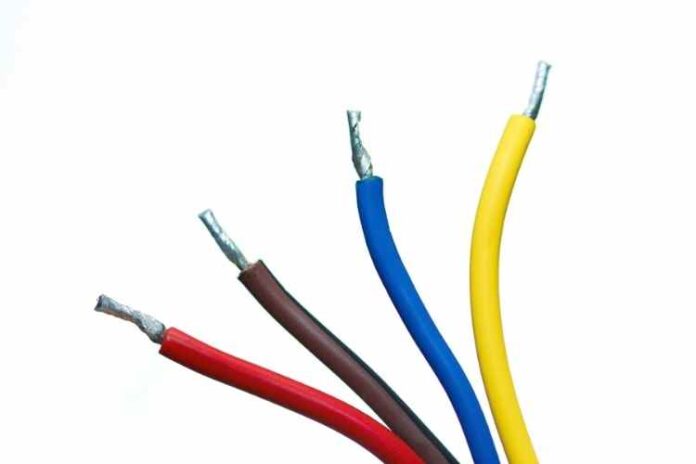Elements around us can be differentiated depending on their physical properties like solubility, polarity, colour, texture, phase, malleability, etc. But besides these properties, the classification of elements can also be done depending on their electrical charge conductivity, insulators, and conductors.
Here, we will be looking at the different types of Conductors depending on their ability to conduct electricity.
How do Conductors Work?
This can be explained easily through a simple experiment. If you take a small LED bulb and a battery and the electric circuit between the bulb and the battery is completed with a cotton or plastic thread, the bulb will not glow.
However, the bulb will start to glow if the same circuit is completed using a metallic wire-like copper wire. The experiment indicates that certain elements allow transfer of charge while others don’t. Hence, the classification of elements can be done through their electrical conductivity.
What are electrical conductors?
In general, conductivity is the capability and capacity of a substance to transmit heat or electricity. Electric conductors are substances that can carry electrical charges, that is, electrons that move from one atom to another through voltage application.
The most effective electrical conductor that people mostly encounter in everyday life is pure elemental silver. Brass, aluminium, gold, steel, and copper are good conductors of electricity too. Conductors are made of solid metals in electronic and electrical systems, moulded into wires and sometimes etched onto a circuit board.
Even some liquids work as good conductors of electricity. For example, mercury is a good electrical conductor, whereas a saturated salt-water solution is a fair conductor. However, gasses are poor electrical conductors as their atoms are too far to allow the exchange of electrons.
The different types can be as follows:
- Semiconductors: These are substances that are generally poor conductors but can work as good conductors when certain conditions are met. Various metal oxides, germanium, and silicone are semiconductor materials. The holes (electron absences) and electrons work as charge carriers in semiconductors.
- Superconductors: These are metals that can conductor electricity at extremely low temperatures compared to other known substances at room temperature. While conducting current, super-conductors do not show any energy loss and even expel magnetic fields when they transition into the superconducting state.
Factors that can affect the electrical conductivity of substances
The measure of how good a certain material can conduct electricity is determined by its electrical conductivity. Although all materials can conduct electricity, the ones that portray a higher conductivity measure are electrical conductors.
Metals are the best conductors of electricity, and they have closely linked atomic structures that allow free electron (charges of electricity) movement. However, this characteristic is not constant and varies across different conductors due to extrinsic and intrinsic factors.
Therefore, here are some general factors that can affect the electrical conductivity of materials.
- Temperature
The conductivity of a material depends on its variation in temperature. This variation is caused by the thermal excitation of atoms in conducting materials, which is directly responsible for increasing the temperature of a material.
Hence, increasing the electrical conductor’s temperature can interfere with its conductivity. Such an effect is observed in various transmission lines and electrical devices. Hence, sensitive electronic devices are accompanied by good cooling mechanisms to keep the conductor’s temperature consistent.
- Electromagnetic Fields
These are present everywhere and affect the electrical conductivity of materials. The presence of electromagnetic fields with opposite polarities and string intensities can cause a change of current flow rate within the electrical conductors.
This effect is called magnetoresistance because it provides varying resistance in an electrical conductor in the surrounding environment through an intense magnetic field. Even though an electrical conductor would create an electromagnetic field while conducting electricity, the field would have its magnetic and electrical components aligned at 90 degrees to each other.
Hence, they are less problematic for the flow of electricity. In comparison, external electromagnetic fields would be independent, interrupting the current flow through the conductors.
- Impurities
Impurities are insulating particles of various non-conducting elements present in an electrical conductor, which decreases the material’s conductivity. Such insulating substances are present either due to manufacturing flaws or natural contamination.
These impurities can affect the current flow within a conductor, which eventually decreases its conductivity level.
- Frequency
An electrical current’s frequency is the number of times it can current oscillatory cycles within a second. Frequency is measured in Hz (hertz). When the frequency increases above a specific higher limit it can cause the flow of electrical current around the conductor instead of running it through the conductor.
Such a phenomenon is called the skin effect, which usually occurs when the electrical current frequency reaches above 3 GHz but reduces the property of electrical conductivity of substances.
However, this effect can only be observed in operations conducted by alternating current as the direct current does not oscillate when it flows and has a frequency of 0 Hz.
Wrapping Up
Hence, conductors are materials or substances that contain movable electrical charges. Good electrical conductors such as metallic ones like aluminium and copper have movable charged particles called electrons that help pass electricity.






